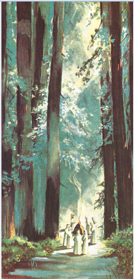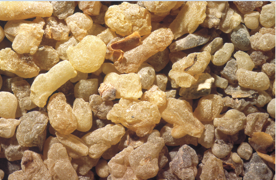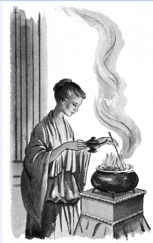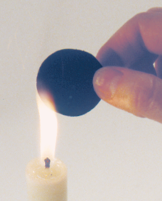Humanism • Spirituality • Well-being
No products
Prices are tax included
Product successfully added to your shopping cart
There are 0 items in your cart. There is 1 item in your cart.
A BRIEF HISTORY OF INCENSE


It seems that since our earliest days, humankind has been subject to the influence exerted by plants through their forms, colours and scents. Perhaps it was the sight of sap flowing from trees which first inspired people with the idea of a vital energy which could be taken on by breathing its smoke as it burned.
The first known use of aromatics is mentioned in an inscription dating back to the eleventh Egyptian dynasty, when king Sankhara sent an expedition searching for them as far as the shores of the Red Sea and the land of Punt, modern day Ethiopia.
Among Semitic communities, the use of incense was also very widespread. It was produced using various types of scented wood, such as Cypress, myrtle, cedar and herbs.
In the Priestly code of the Israelites, Yahweh himself detailed its use: “You shall build an altar for the burning of incense... Aaron shall burn thereon sweet incense”.
Throughout the centuries, almost all religions have incorporated the use of plants into their rites; incense, a resin as precious as gold, embodied all the values associated with sacred functions: after all, did the Magi not offer it to the Infant-King of Bethlehem?
Therefore, over time, at every stage of his life man was accompanied by wisps of incense smoke floating towards the heavens, which came to symbolise the link between the visible and the invisible.
WHAT IS INCENSE?
Initially, the word incense was used to refer to the resin-like substance produced by an Ethiopian tree, olibanum, also known as “Boswellia Carteri”.
Nowadays, it can be used to describe a mixture of resins and plant oils which are charred to produce small granules which, when burnt over a hot coal, give off their particular aroma.
Most forms of incense have an olibanum, myrrh or benzoin base, which is mixed with other aromatics. Nevertheless, the quantities and exact composition are not widely known, the recipe remaining a closely guarded secret.
Once soaked in perfumes and oils, these resins can also be rolled up in one way or another, around a piece of bamboo, to create what are referred to as sticks.
THE PROPERTIES OF INCENSE
In times of Antiquity, incense always featured among the offerings most frequently found on altars. The word incense is transcribed in Egyptian as “Sen Netjer”, a term meaning “to make divine”. Wisps of incense smoke drifting towards the heavens seemed to carry with them the thoughts of the officiator to the heavenly kingdom.
Incense is traditionally categorised on the basis of its relationship with the four elements (Earth, Water, Air and Fire), but also on the basis of astrology: each plant (and its resin) capturing and embodying specific planetary influences.
For each and every one of us, incense can become the means through which spiritual alchemy operates, enabling our inner self to direct prayer and praise towards the heavenly plain.
Before being used, incense should therefore be selected with care, the choice depending on the properties it possesses and the effects its scent has on us.
HOW TO USE INCENSE
Granulated and powder incense
- Take a piece of charcoal (or half depending on the size of the room)
- Light the coal, placing it in a ventilated, stemmed, brass container to avoid damaging any furniture.
- Wait until the entire surface of the coal is glimmering with sparks.
- Then place a small pinch of incense on the coal. It should start to give off smoke.
- We recommend not using too much incense to avoid smothering the coal or an excessive amount of smoke.

Rosicrucian incense cubes
- This incense does not require the use of coal.
- Take a cube and light its edge.
- Put out the flame after around 30 to 40 seconds. The piece of incense will continue to burn by itself.
- To completely extinguish a cube, gently crush the edge which is burning. It can then be reused at a later date.

Incense sticks
- Take a stick. Light its tip.
- Put out the flame after around 10 seconds.
- To stop it from burning further, gently crush the end of the stick.
DRC shop
-
Books
- Western traditions
-
Western mystical authors
- Bacon Francis
- Boehme Jacob
- Bruno Giordano
- Davy Marie-Madeleine
- Desjardins Arnaud
- Dürckheim Karlfried Graf
- Eckartshausen Karl von
- Lévi Eliphas
- Maier Michael
- Maître Philippe
- Mystiques chrétiens
- Papus
- Paracelse
- Pic de la Mirandole Jean
- Saint-Yves d'Alveydre Alexandre
- Schwaller de Lubicz René Adolphe et Isha
- Sédir
- Souzenelle Annick de
- Steiner Rudolf
- Swedenborg Emmanuel
- Teilhard de Chardin, Pierre
- Vinci Léonard de
- Oriental traditions
- Oriental mystical authors
- Other traditions
- Religions
- Symbolism - Wisdom- Spiritual practices
- Philosophy- Utopias
- Prayer - Meditation- Visualisation
- Science and spirituality
- Gift books
- Arts divers (Peinture - Sculpture - Architecture - Danse ...)
- Music
- Novels - Tales - Poems
- Biographies
- Audiobooks
- Health
- Psychology
- Inner fulfilment
- Children' s books
- Death - NDE - Palliative care (support to the terminally-ill)
- Reincarnation - Karma
- Ecology - Nature
- Feng Shui - Geobiology
- Tarots - Pendulums
- Foreign mystical literature
- Coffee-table books
- Rosicrucian books
- Martinist books
- Incense
- Ritual objects
- Music
- Health and well-being
-
Gift Ideas
- Traditional objects
- L'esprit de la Chevalerie &
- Nature
- Terrestrial, celestial, and planetary globes
- Le plaisir d'écrire
- Postcards - Stationery
- Candles - Candle holders - Candle snuffers
- Parfums d'intérieur
- Jewellery
-
Christmas 2024
- Ces petits riens qui ont le parfum du bonheur
- Nature
- Universe
- Music for the soul
- Jewels
- Les mots pour le dire
- Messages de ...
- Parfum de rose
- Incense fragrances
- The pleasure of reading
- Mythes et contes
- Les petits Platons
- Egypt, land of Tradition
- On the routes of the Orient
- The country of childhood
- The world of fragrance
- Créez votre bougie
- Christmas
- Christmas candles
- Greetings cards
- Home and garden decoration
- Children
- Divinatory arts
- Rosicrucian and Martinist items
from 95€
change your mind
payment











